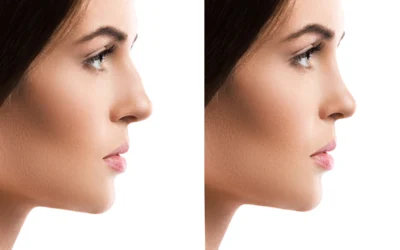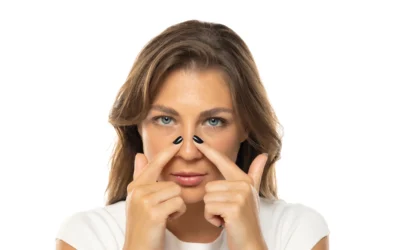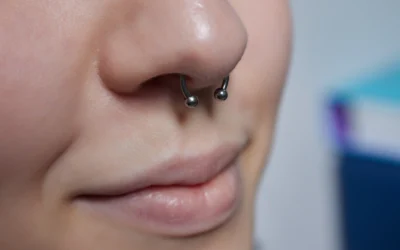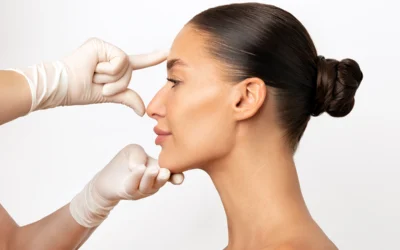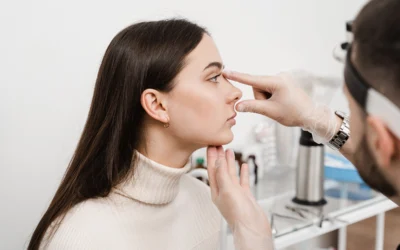Advancements in Crooked Nose Correction: Suture Suspension Technique
Comparing the suture suspension technique for crooked nose repair introduced by Dayan SH and Shah AR in 2004 to more recent literature reveals a progression in the complexity and specificity of techniques tailored to address various aspects of nasal deformity. The...
The Precision of Rhinoplasty: How Dr. Anil R. Shah Masters the Art of Nasal Reshaping
Precision is the cornerstone of success in the realm of cosmetic surgery, particularly in the intricate domain of rhinoplasty. Can one truly attain a precise nose? The unequivocal answer lies with Dr. Anil R. Shah, an exemplary surgeon whose dedication to precision...
Nasal Taping and Its Benefits
What is Nasal Taping? Nasal taping after rhinoplasty is a common practice that aims to support the new nasal structure, reduce swelling, and potentially influence the contouring of the nasal skin as it heals. The effectiveness of nasal taping can vary based on...
The Importance of Avoiding Sunlight After Rhinoplasty
What Happens to the Nose? After a rhinoplasty, the nose is vulnerable due to surgical alterations and healing processes. Excessive sun exposure can lead to complications such as increased swelling, discoloration, and even permanent skin damage. Sunlight can exacerbate...
How Nasal Skin Gets Thicker Over Time and Reduction Strategies Using Retinols and Lasers
Introduction The nasal skin can become thicker over time due to increased dermal thickness and heightened sebum production, which often affects the aesthetic and structural aspects of the nose. Enhancing these conditions involves understanding their dermatological...
The Science of Nasal Obstruction
Introduction Nasal obstruction, characterized by impediments to nasal airflow, poses significant challenges to individuals' respiratory function and overall well-being. Dr. Anil Shah, an esteemed practitioner based in New York City, has distinguished himself in the...
Advancements in Ethnic Rhinoplasty: A Case Study by Dr. Anil Shah in New York City
In the domain of nasal reconstruction, Dr. Anil Shah, based in the metropolis of New York City, stands as a trailblazer, particularly renowned for his expertise in addressing the needs of ethnically diverse patients. Among his numerous cases, a patient of mixed South...
Do I Need to Tape My Nose When Flying After Rhinoplasty?
Undergoing a rhinoplasty can be a transformative experience, both aesthetically and in terms of breathing functionality. However, post-surgery care is crucial for ensuring the best possible outcome, and this includes considerations for air travel. Many patients wonder...
How Soon Can I Re-pierce My Nose After Surgery?
After undergoing nose surgery, many patients wonder when they can safely re-pierce their nose. Often, individuals initially choose to pierce their nose as a way to draw attention away from asymmetries in their nostrils or overall nasal shape. Piercings can create a...
Advancing Rhinoplasty: Insights from CT Imaging Studies on Nasal Septal Deviation
The study by Zoumalan RA, Morris LG, Zeitler DM, Shah AR, focusing on the effects of various submucous resection techniques of septal cartilage on nasal tip projection, is situated within a broader context of research that utilizes CT imaging to understand nasal...
Open septoplasty: indications and treatment
Introduction The paper "Open septoplasty: indications and treatment" by Mohamad Chaaban and Anil R. Shah, published in the Otolaryngologic Clinics of North America in 2009, presents a comprehensive overview of open septoplasty. This procedure is an evolution of...
Why Do We Get Deviated Septums?
Easy to Understand Summary: The study "Nasal Septal Deviation in the Pediatric and Adult Populations" explains why and how the inside of your nose might get crooked as you grow older, perhaps leading to a desire or need for a rhinoplasty. Here's what you need...
Using CT Scans For Nasal Septal Deviation
In the realm of evaluating nasal septal deviation, various mathematical methods have been developed to enhance the accuracy and objectivity of measurements, particularly with the advent of computed tomography (CT) scans. While the concept of "tortuosity" provides a...
Using CT Imaging for Nasal Septal Deviation
Using CT imaging as the basis for analyzing the cause and characteristics of nasal septal deviation (NSD) offers a precise and objective method to evaluate the anatomical nuances of the nasal septum. Focusing on studies that utilize CT scans allows for a comparison of...
Unlocking the Potential of Rib Cartilage Harvesting and Reshaping in Nasal Surgery:
Introduction Welcome to the forefront of nasofacial surgery, where pioneering techniques redefine the boundaries of reconstructive possibilities. Dr. Anil Shah, a distinguished figure in facial plastic and reconstructive surgery based in New York City, introduces a...
Unlocking Natural Beauty: The No-Incision Approach to Nasolabial Fold Undermining by Dr. Anil Shah
Introduction In the bustling metropolis of New York City, where beauty standards are high and innovation is paramount, Dr. Anil Shah stands out as a pioneer in facial plastic surgery. Among his many groundbreaking techniques, Dr. Shah has perfected a no-incision...
Unlocking Insights: Nasal Septal Deviation Research and Treatment
Comparing the paper by Reitzen and Shah on nasal septal deviation (NSD) with other studies that have employed CT imaging to investigate NSD provides a broader understanding of the methodologies and findings in this research area. Reitzen and Shah's study introduced a...
Tortuosity: Measuring the Septum
Easy to Understand Summary: Imagine you're trying to understand why some people's noses are a bit more zigzagged than straight. In 2011 a team of doctors, including Dr. Anil Shah, came up with a cool way to measure this. They use something called "tortuosity," which...
Structural Approach to Endonasal Rhinoplasty
The paper "Structural approach to endonasal rhinoplasty" by Anil R. Shah and P. Miller, published in Facial Plastic Surgery in 2006, explores the integration of structural grafting techniques within the framework of endonasal rhinoplasty to achieve more reliable and...
Quantifying the Ideal Septum
The concept of "tortuosity" introduced by Reitzen et al. (2011) to measure nasal septal deviation is mathematically grounded in comparing the actual length of the nasal septum to its ideal, or straight, length. Mathematically, this approach provides a quantifiable...


